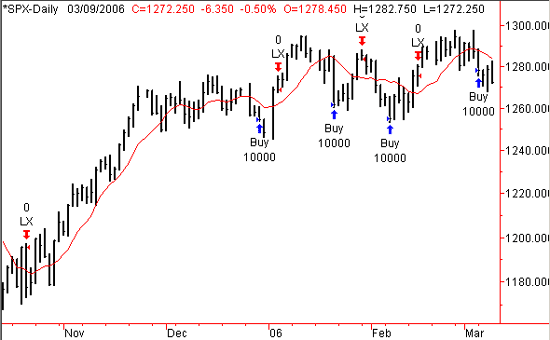Perry Kaufman's book Smarter Trading is about fine tuning your trading methods and increasing profit. The book has a particular emphasis on testing. It is clear from the beginning that Kaufman's trading techniques are somewhat mechanical and depend very much on historical analysis via trading software. Kaufman takes the reader through a well- structured journey from general market strategies, to very specific techniques on developing a trading system. Overall, the book is well-written. The purpose of this book review is to first describe what the book is about and then to move in on to some of the "gems" of useful information from the book so as to pass it on to readers and to save time for those who are too busy to read the book.
Trade Offs
Kaufman says that every system has limits and usually when one part of the system strengthens, another part of it weakens. For instance, when you have a system with a high percentage of profitable trades, the win/loss ratio tends to be lower than the average system. On the other hand, if you have a system that has a very high win/loss ratio, that same systems tends to have more losses. If you have sytem that has a high percentage of profitable trades plus a high win/loss ratio, the number of trades per year tends to decrease significantly. It is possible to have a strategy that has worked 100% of the time historically. All you have to do is find a strategy that gas traded only 2 times in the last 100 years and both times it has been right. It's 100% effective so far. But what good is that system? The point is, don't get too excited about a system that has strengths without looking at the weaknesses that the system has.

Example. This long strategy above has been 70% profitable since 1970. But, it requires a cross above the 10-day moving average before it exits. So, the exit itself makes it more likely to be right, but losers are larger than winners. The strategy only exits when the market FINALY goes over the red line. So looking at the win percentage is misleading. Look at the system weaknesses as well.
Risk Control
Kaufman also discusses in detail risk control. Specifically, he says that return is not the only thing that one should look at when trading. He insists that we should instead focus on risk-adjusted control. Kaufman says that we should look at standard deviation and the max drawdown of strategies when we are testing. In fact, he says that it would be better to invest in bonds if the expected risk-adjusted return in higher than stocks. This logic is strong, but you have to be careful with it's application. If a money market account has a higher risk-adjusted return than a stock account that you have tested historically, it still may be a bad idea to invest in all cash. For one thing, you may have not used a long enough period for testing. Another thing is that in many cases the risk adjusted return is only slightly higher and the return on that same cash account is just too small to keep up with inflation. So my opinion is that traders should definitely look at risk-adjusted returns, but it should not be the soul determinant when choosing a system. When system testing, pay attention to standard deviation and max drawdown.
Making Your Trading Strategy Better
1. When starting a new system, the first step is to think of a logical way to trade. In other words start with logic and then test the logic. Don√Ę‚,¨‚"Ęt just test random things.
2. Test all rules in your trading strategy. If you can't test certain rules then you may want to reconsider using those rules. Using untested rules leaves you open to subjectivity, rationalization, and false justifications. If you plan on selling if you are down 6% in a stock strategy, then program that into your testing. See if it really works.
3. Are you testing a strategy that only works under certain market conditions? Be sure to use market periods that have down markets, sideways markets, and up markets. If you test only 1990's data for example, your strategy would have probably flopped since the beginning of our current decade. Market conditions are very different now.
Overall, the book is a must read. Many books offer just a little bit of new understanding to readers, but this book is loaded with it. Be disciplined and trade well.
Price Headley is the founder and chief analyst of BigTrends.com.